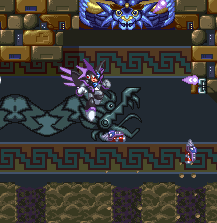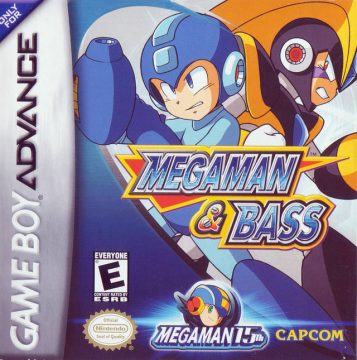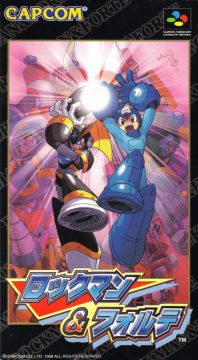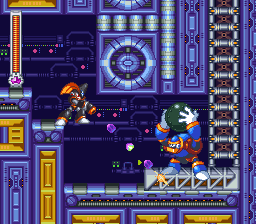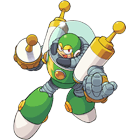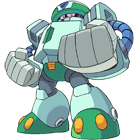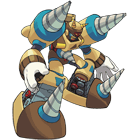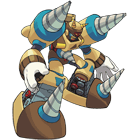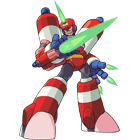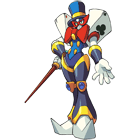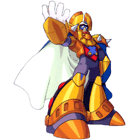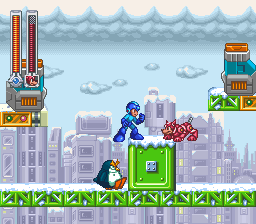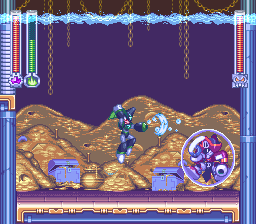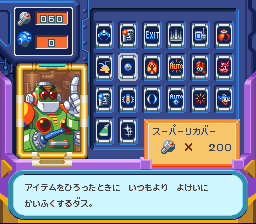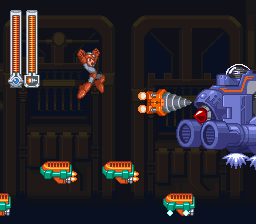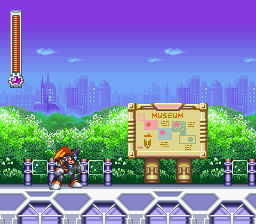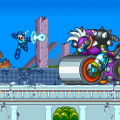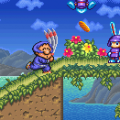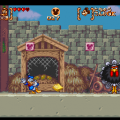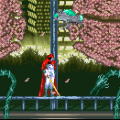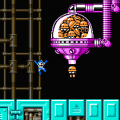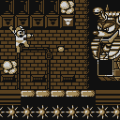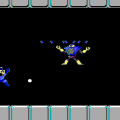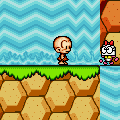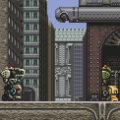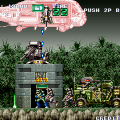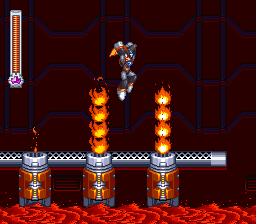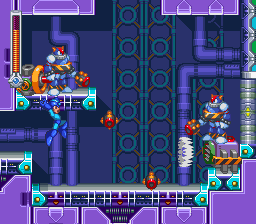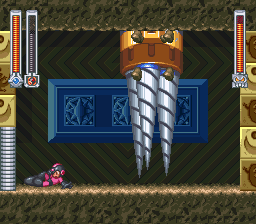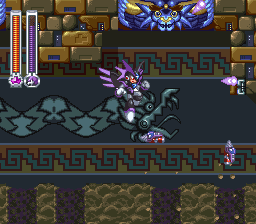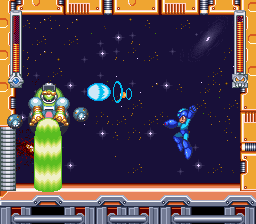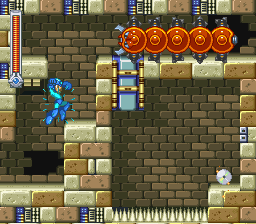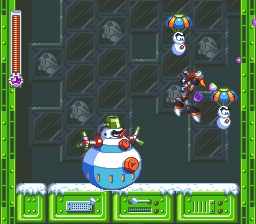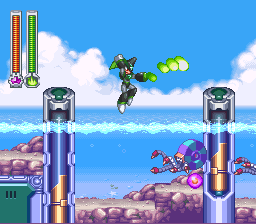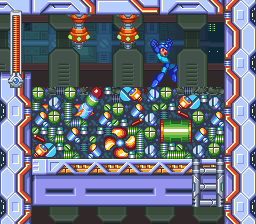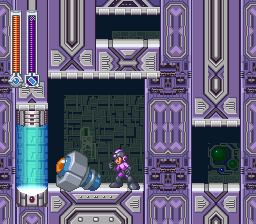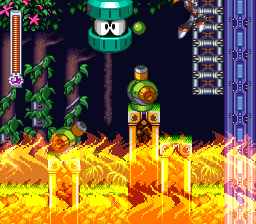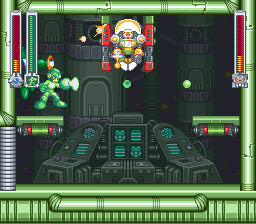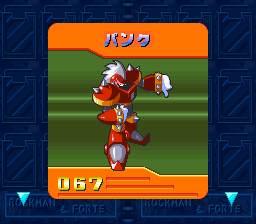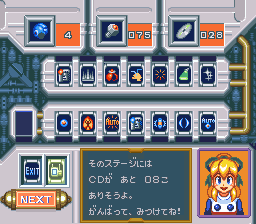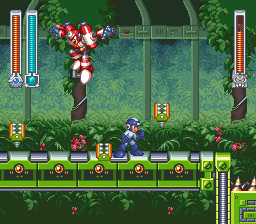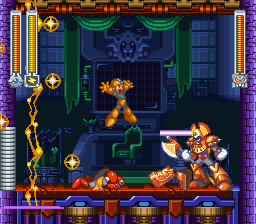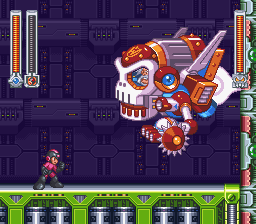- Mega Man (Series Introduction)
- Mega Man
- Mega Man 2
- Mega Man 3
- Mega Man 4
- Mega Man 5
- Mega Man 6
- Mega Man 7
- Mega Man 8
- Mega Man & Bass
- Mega Man 9
- Mega Man 10
- Mega Man 11
- Mega Man: Dr. Wily’s Revenge
- Mega Man II (Game Boy)
- Mega Man III (Game Boy)
- Mega Man IV (Game Boy)
- Mega Man V (Game Boy)
- Mega Man: The Wily Wars
- Mega Man (Game Gear)
- Rockman Complete Works
- Mega Man Anniversary Collection
- Mega Man 3 (DOS)
- Mega Man (DOS)
- Mega Man: Powered Up
- Super Adventure Rockman
- Wily & Right no RockBoard: That’s Paradise
- Mega Man Soccer
- Mega Man: The Power Battle
- Mega Man 2: The Power Fighters
- Rockman: Battle & Fighters
- Mega Man Battle & Chase
- Street Fighter x Mega Man
- Mega Man Tiger LCD Games
- Rockman & Forte (WonderSwan)
- Rockman’s IQ Challenge/Rockman Gold Empire/Rockman Strategy
- Mega Man Mobile Games / Panic Shot! Rockman
- Mega Man Unreleased Games
Keiji Inafune stated that this side game was developed for the Super Famicom specifically for younger kids that were unable to buy the new 32-bit consoles, or given their older sibling’s Super Famicom as a hand-me-down, much like Kirby’s Adventure was for the NES. While that sentiment is all well and thoughtful (more expensive cart game prices notwithstanding), Mega Man & Bass is definitely not an easy jaunt for the kiddy crowd.
Known as sort of a “Mega Man 8.5”, the story takes place chronologically in between Mega Man 8 and 9, where Wily hasn’t been heard of in a while, but one crazed self-proclaimed King robot is amassing an army for his new robo order with humans subjugated. He even breaks into the Robot Museum to collect data for his dreams to be realized. Proto Man rushes to stop him, but gets sliced in half by King’s axe, leaving him out of the picture due to his much needed repairs. Mega Man and Bass must make a truce in order to bring down the rebellion.
King rounds up six new Robot Masters, along with Tengu Man and Astro Man from Mega Man 8 to prevent any do-gooders from reaching him. There was no fan design contest this time around as, Capcom decided to have three manga illustrators come up with the new foes.
Robot Masters
KGN-001 Dynamo Man
This power plant tour guide turned rogue is a pain. Aside from being resilient to his weapon weakness, he hops into an enforced electrode to recharge his health once it gets low, making it difficult to break both barriers before he regains a sizable portion of his energy back. Not only that, he tends to make electric shielding projectiles to fling at Mega Man in addition to his main ability of summoning Lightning Bolts. His design was created by Hitoshi Ariga. [Weakness: Copy Vision]
KGN-002 Cold Man
A walking freezer built to keep dinosaur DNA strands in cryostasis. Designed by Kouji Izuki, his core hovers only a few degrees above absolute zero, making him rather slow in movement. Of course, being nimble isn’t necessary when he can call upon slowing mist baddies and crush Mega Man with sliding Ice Walls, which are perfect for riding on over spikes. [Weakness: Lightning Bolt]
KGN-003 Ground Man
Looking like a robot straight out of Gurren Lagann, this tank bot is nothing but drills. When not drilling underground to drill Mega Man with his massive drills, his Spread Drill weapon is a rocket-propelled Russian nesting doll of drills within drills. This not-Drill Man was designed by manga artist Iwamoto Yoshihiro, who also worked on the Mega Man X manga. P.S. Drills. [Weakness: Remote Mine]
KGN-004 Pirate Man
Arrrh! Here be the second Robot Master designed by Kouji Izuki. Don’t think ye be plunderin’ his sunken treasure so easily! His giant bubble protects him from shots and his aimable explosive Remote Mine will have ye walkin’ the plank. Seriously, it took this long to make a pirate robot after having both a ninja and vampire robot? [Weakness: Wave Burner]
KGN-005 Burner Man
The second Hitoshi Ariga Robot Master, originally using the beta name Blast Man. He was tricked by King to burn down forests, lest the non-existent bomb inside him goes off. The look on his face seems to convey he didn’t need much of a excuse to commit arson. His gas tanks emit green Wave Burner flames that he sprays about to scorch everything in his swift wake. The spikes lining the edges of his room are his main weakness, but only if Mega Man can push him onto them. [Weakness: Ice Wall]
KGN-006 Magic Man
Iwamoto’s second design is far more flashy. With a sleight of hand, his Magic Cards can snatch away health and items faster than a mark’s eyes can follow. His pompous need to be in the spotlight is his downfall, leaving him liable for his entire deck to be cut in a stunlock loop. He also reads tarot cards to those he wishes to impress. [Weakness: Tengu Blade]
King
A noble bot wishing to rule a robo kingdom free of pesky humans. His real purpose is a cover for his creator to go about his world domination schemes. Turns out his programming protocol works a little too well, as King is quick to abandon his fleshy master and side with Mega Man and his friends, once they prove their superiority over him. [Weakness: Lightning Bolt]
Much of the game’s look is lifted directly from Mega Man 8. The palettes and animation are downgraded, but still look fantastic. The new sprites try to mimic the aesthetic as close as the 16-bit system can handle, though a few assets, much like many of the sound effects, feel closer to Mega Man 7. The music, however, is very lacking. For such a late arrival on the console, the sampling sounds closer to earlier generation titles from the early ’90s, not to speak of the forgettable compositions themselves. Mega Man 7 and the first three Mega Man X games showed the world what the SNES could do with their catchy tracks, so this tepid score feels like a slap to the face.
Breaking the usual open stage flow the series is known for, Mega Man & Bass instead uses a more progressive chain of unlocked levels from the initial intro stage and four selectable Robot Masters. Unfortunately, the string of boss weaknesses does not reflect the more restricted progression, so either you’re railroaded to stick to one chain for the game and skipping over many of the first available stages, or go buster-only against some of the toughest Robot Master battles the series has seen. Mega Man & Bass easily ranks as one of the hardest in the classic franchise. E-Tanks are once again gone and the bosses hit hard, so many fights become a matter of dishing out up to 28 shots while Mega Man can only withstand 4 or 5.
The level layouts are a pain. Each setpiece seems to aggressively have it in for the player. Enemies fire from alcoves out of shooting range, solid ground is a luxury, disappearing blocks are laid out far enough apart to require precise jumps, and health pickups have been swept away. Running across an enemy that coughs up a large energy pellet is a rare event. Much of the stage design favors Bass’s abilities, leaving Mega Man players with a harder slog. It’s too bad that Bass is left with a weak buster to take down the already challenging Robot Masters.
The stages contain 100 CDs to collect, which offer little details about all the Robot Masters and bosses, including characters from the Game Boy and Genesis titles. Each CD has a unique sprite and lists the robot’s likes and dislikes. Nabbing all 100 means having to play each Robot Master stage multiple times with both Mega Man and Bass. Many require Rush Search and a purchased powerup to make hidden CDs sparkle, adding extra gameplay hours to completionists. There’s no in-game reason or reward for collecting them all, though Dr. Light seems pushy on the CD Data screen, pleading for Mega Man to pick up more and more.
Auto runs the in-game shop again to accept your screws for helpful, if not wholly necessary, items. Many of the better wares don’t arrive in the store until enough stages are cleared, and screws don’t drop nearly often enough to afford anything near the beginning, when any and all assistance is sorely needed. On the flip side, the interlude hub stage where Mega Man must use the earned weapons to unlock the fortress gives massive screws to line his metal pockets with ample currency to purchase everything needed right before tackling the final levels. Certain upgrades are available only to one of the player robots. Many balance out their individual flaws, like a boost to Bass’ weak fire power or faster charging for Mega Man. But even the power-ups only give a slightly easier time with the final 3-level gauntlet of King’s Fortress.
There’s no reason to discuss the horror of having to re-battle the tough Robot Masters again in a row in the King Fortress. Those feel heavenly after experiencing Fortress Stage 2. No less that 4 bosses appear here: a massive tank, a hard-to-hit hovering plane, King himself with two attack forms, and a monstrosity of King merged with the plane and the tank, known as Jet King Robo. The plane fight is hair-pullingly rough as Mega Man has to hop from tiny platform to tiny platform, dodging rocket fists that’ll plummet him to instant doom, all while trying to land a shot at the plane’s weak point. Topped with a brutal level design, this is possibly the hardest stage ever produced in the series. And this was developed for kids in Japan that couldn’t afford a new console?
Since its release was well into the twilight years of the 16-bit generation, Mega Man & Bass never saw an international release until its remake on the Game Boy Advance nearly half a decade later. The portable port is far from an ideal experience. Besides the lowered quality of the music and washed-out visuals, the cropped screen makes the difficulty yet worse when many enemies or bullets can’t be seen. The English translation is dodgy at best, particularly with the CD data, opting for terrible pop culture references among the Robot Master quotes, like Ground Man parroting Anakin’s infamous line from the then-recently released Episode II: Attack of the Clones, “I hate sand”. During the years in between, many websites touted the game as Mega Man 9 before the real deal came along much later.
Comparison Screenshots
